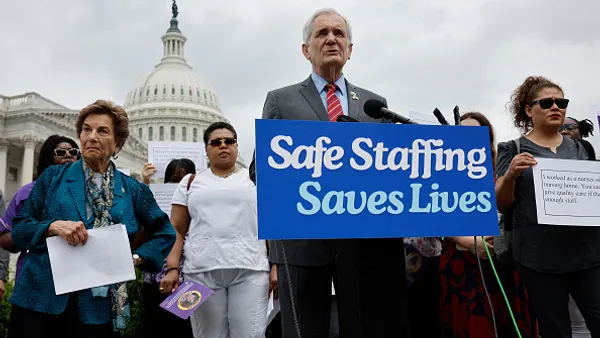Dive Brief:
- Half of workers surveyed by Eagle Hill Consulting said they would prefer working for an organization that offers hybrid and remote work flexibility, according to a report released Aug. 7, but only 30% of those surveyed said their employer has asked for their input on what they would prefer.
- While half of workers said they would consider looking for a new job if remote and hybrid flexibility were reduced, many also said they see the value of in-person work. Workers said team building, team member integration, training, onboarding and kick-starting a new project were all better served in-person, according to the survey.
- “One troubling finding is that the vast majority of workers say they haven’t been asked about their preferences regarding remote work,” Melissa Jezior, president and CEO of Eagle Hill Consulting, said in a statement. “Gauging worker sentiment is a necessary step employers should take to make informed policy decisions. While employee preferences don’t drive all business decisions, not understanding worker views is never a good approach.”
Dive Insight:
Employers are still wrangling with what flexibility will look like moving forward as worksite location remains an evolving part of talent management conversations.
For starters, employee preference may vary wildly — and answers to the question of work arrangement preference differ on a survey-to-survey basis. For example, 70% of workers surveyed by the American Staffing Association earlier this year said they prefer hybrid or in-person work, though that survey did also reveal some major burnout concerns.
Workers and managers also may not be appropriately trained for flexible work arrangements, according to a March 19 report by TechSmith Corp., Global Workplace Analytics and Caryatid Workplace Consultancy. Managers need to be taught skills around establishing team norms and leading a distributed workforce, most especially, the report said.
But for companies for which location flexibility may no longer be an option, leaders may still be able to offer flexibility through “core hours,” a recent Flexa analysis showed. Offering workers flexibility over when exactly they need to be at the office and when they can leave — so long as they are at the office at a chosen set of key hours — may be enough to attract job seekers who want in-office work while also balancing demands for better work-life balance.














